The Article
Russ Andrews PowerPurifier: Preventing headaches, earaches and heartaches?
12th May 2017
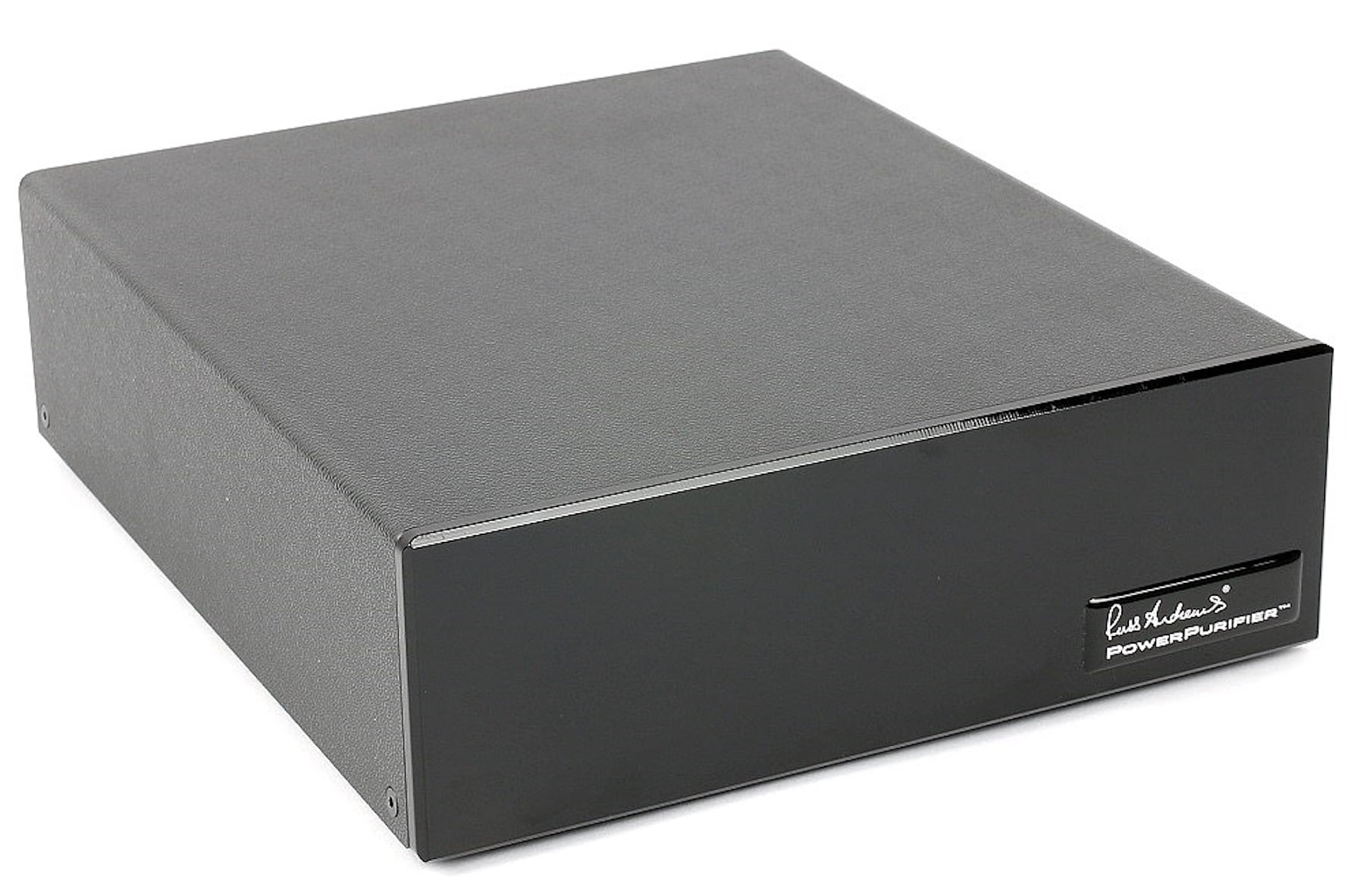
Promising to lower and/or remove mains-generated noise from your hi-fi chain, Paul Rigby reviews Russ Andrews’ PowerPurifier
Mains noise is an insidious destroyer of hi-fi sound quality, mainly because its not obvious like a siren, drill or crying baby. You only really know it’s there when it’s gone. All mains supplies suffer from it, though and all hi-fi chains benefit by addressing it with specialist kit.
This new product from Russ Andrews is interesting because it’s a one-box system that targets spikes and surges, mains noise and Wi-Fi interference. PowerPurifier seems simple enough on the outside, offering the eye a basic, featureless black box. Inside is a broadband power conditioning UltraPurifier filter and SuperClamp surge protection. That’s not all, though. The PowerPurifier allows you to open up the box, to add extra filtering when you can afford it.
The filtering products are supplied as little boxes – all of the (broadly) same style and shape – that fit easily inside the PowerPurifier chassis. A full possible complement would hold one MegaClamp, one mains Zapperator and up to four ClarityMains in addition to the SuperClamp and UltraPurifier that are fitted as standard.
Adding extra filters to your PowerPurifier is easy. Inside the chassis, you’ll find a selection of colour-coded sockets which match the colours of the plugs on the various filter modules. To get the module up and running, you just plug the new filter module into the corresponding socket. That’s it. No soldering, no messing around. Russ Andrews will fit the modules for you if you feel nervous about doing it but, frankly if a technical ignoramus like myself can fit the modules inside the PowerPurifier, then anyone can. Once you’re happy with the positioning in the chassis, you can secure the module with a supplied sticky pad.
The PowerPurifier is designed to be connected close to your Hi-Fi, nothing needs to be plugged into it for it to work. It includes an IEC input socket for you to use your choice of power cable. As you can see by the above image, there’s a label on the back so you you can mark which additional filters have been installed on your example.
SOUND QUALITY
I began the test in what, for many people out there, will be a default setting for a mains set-up. That is, a CD player (plus a DAC hanging off the CD transport, in my case) hooked up to an amplifier and speakers with the mains connected to a basic power block extension. The run-of-the-mill white plastic, chassis type that you might buy from a High St shop to run your TV/DVD, for example.
I began the test playing Earth, Wind & Fire’s Let’s Groove. Now, I know that the Parasound amplifier is a smooth performer with plenty of clarity and the Leema CD has power and lots of bass punch but neither of them are bright in presentation. Neither sounds compressed in the mids or pinched in the treble. Neither offers bass that is thin with a hard edge to the front part of the bass with little character afterwards. And yet, that was being presented to me, in sonic terms, here. My reference set up is catered towards removing noise from my hi-fi system but that’s certainly what I was hearing here. A host of noise from the mains that sat upon the electric carrier like a parasite. This noise doesn’t sound like regular noise: buzzing, static…that sort of thing. This noise puts out a frequency that is not obvious to the ear. It’s there, though and can be experienced in how it masks the good bits of music. Squashing dynamics, removing air and space around the soundstage, adding tension to the performance and that, quite horrible, overly bright and compressed sound from the upper mids.
Put it this way, imagine that you’re standing in front of the original Mona Lisa but, before you get a good look at it, a guy standing next to you takes out a powerful torch (‘flashlight’ for my American readers) and points it, full blast, at the painting. You look at it but there’s too much glare to see it properly. You turn your head and try your best but its tough to get the full message from the portrait. The light obliterates the detail. The colours merge, the finesse is gone, the detailed brush strokes are no longer discernible. The painting is now a smudge, a blur, lacking focus and any sort of emotion. How does that relate to hi-fi? Imagine the light is noise from the mains and the painting is the music you’re listening to because, folks, that’s what’s happening to your music.
For me and this sound test? Frankly, in this default mode, I found the racket unlistenable. It was quickly giving me a headache (that’s not hyperbole, it really was). The prospect of actually sitting through the full album was, frankly, a joke. I hoped that the Purifier could help.
I opened up the chassis and added a single Clarity module to the internal socket, replaced the chassis and plugged it into the wall, next to the basic socket extension plug.
A difference? Absolutely. I’m used to a pretty noise-less hi-fi system so, for my ears, there was still quite a way to go but the improvement was there and it was definite. Hey, it kept my headache at bay, which was a good start. Yes, there was still some compressive elements within the upper mids with a highness in the treble but I also heard a blessed opening of the soundstage which infused it with huge amounts of space and air that also enlarged the stage itself, giving the players far more room to move and manoeuvre. This removed a heap of tension from the music too, relaxing the vocals and giving bass a more organic flow.
Obviously onto a good thing, I decided to ramp up the number of Clarity modules to the maximum number, four, to see how that shaped the sound.
Playing Let’s Groove in this configuration, it was only afterwards that I realised that I’d breathed a sigh of relief. Gone was the bright presentation, gone were the horrible compressive spikes, gone was the ear piercing nasties during vocal crescendos. Again, I’m not saying that the sound was perfect. I’m also not describing the sonics as some sort of heaven sent miracle. There were still areas to improve upon but, with four Clarity modules in the system, the entire musical presentation had calmed and eased.
Firstly, the vocal presentation exhibited more detail during the delivery with greater depth in the soundstage itself. This new detail in how the song was sung meant that a lot more emotion reached the ears. More than that, the smearing of the upper mids was reduced to such an extent that subtle synth runs were now exposed for the first time while bass no longer bloomed, giving the backing vocals more room to express themselves. New detail was presented from the legendary backing brass section too. Instead of the ‘white out’ of before, there were much more brassy signatures available that proved the richness of the arrangement.
Finally, I added a single Mains Zapperator to the box and played Unchained Melody from The Righteous Brothers and was impressed by the smoothness of the vocal presentation. The tendency, even with the four Clarity modules in place, for the vocal crescendos to spike still remained. The Zapperator reduced this effect even further, giving a largely smooth vocal presentation. Similarly, the drums which retained a measure of digital falseness about them, now had a largely organic presentation: that stick hitting skin thing with an appropriate response. What a drum should be doing, in fact. There was no mechanical falsity about the percussion with all of the modules in place.
The lowering of more noise allowed even further detail to emerge, the low key guitar plus the resonant nature of the occasional piano key while the strings now added intricacy and complexity.
CONCLUSION
The PowerPurifier won’t solve your noise issues on its own but no one-box system can: nor should it. You’ll have to do more work on a broader level to accomplish that in terms of shelving, isolation, cables and more. The Purifier, though, is an important first step and, for anyone who has implemented little or no strategies to reduce noise with their hi-fi chain, implementing the PowerPurifier system will be almost revelatory. Offering a great way to add feature modules as and when you can afford them, the PowerPurifier is a valuable addition to any anti-noise toolbox.
RUSS ANDREWS POWERPURIFIER MAINS CONDITIONER
Price: £329 (basic model)
MegaClamp module: £180 each
Zapperator module: £142 each
ClarityMains module £114 each
Website: www.russandrews.com
Tel: 01539 797300
GOOD: modular format, reduces noise, multi-function abilities, transparency, detail, easy to use
BAD: nothing
RATING: 8
REFERENCE SYSTEM USED
Origin Live Sovereign turntable
Origin Live Enterprise 12” arm
Transfiguration Proteus cartridge
Leema Antila IIS ECO CD player
Benchmark DAC2 HGC
Icon Audio PS3 phonostage
Parasound Halo integrated amplifier
Quad ESL-57 speakers with One Thing upgrade
Vertex AQ/Tellurium Q cabling
Harmonic Resolution Systems Noise Reduction Components
All vinyl was cleaned using an Audio Desk’s Ultrasonic Pro Vinyl Cleaner

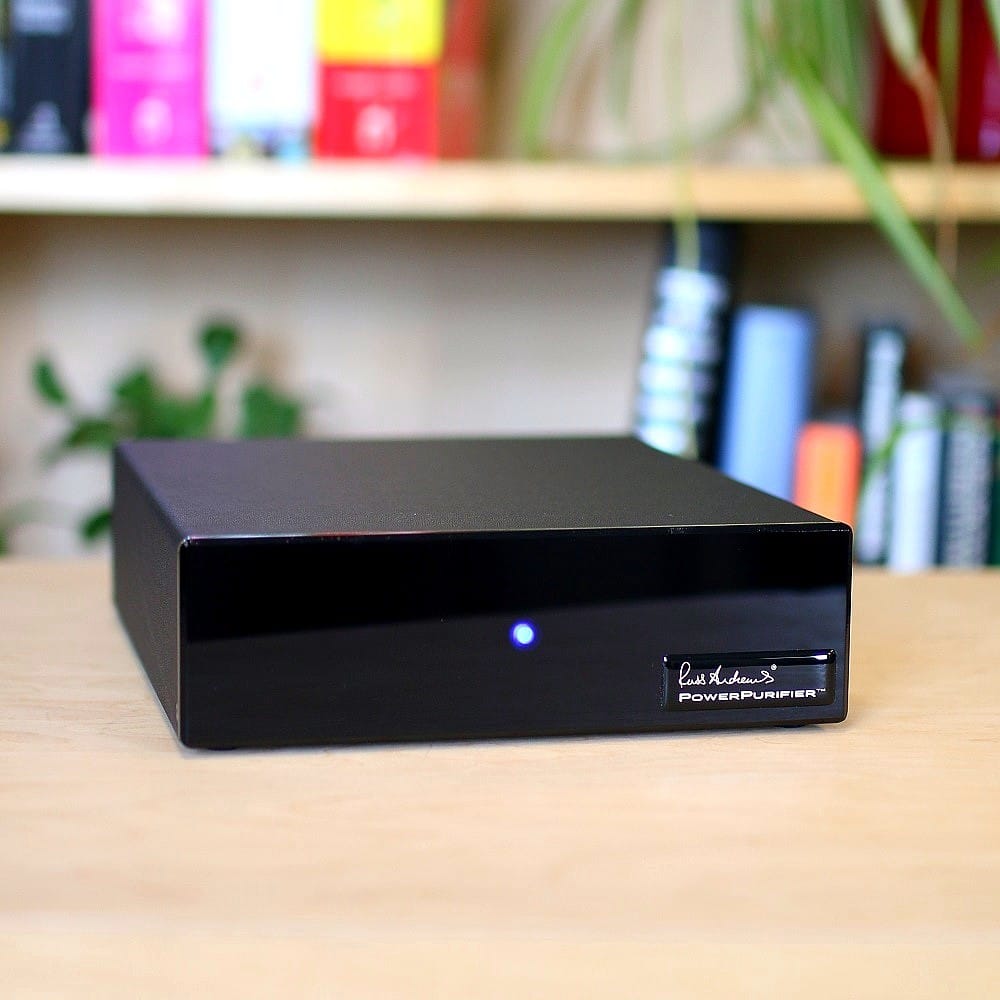
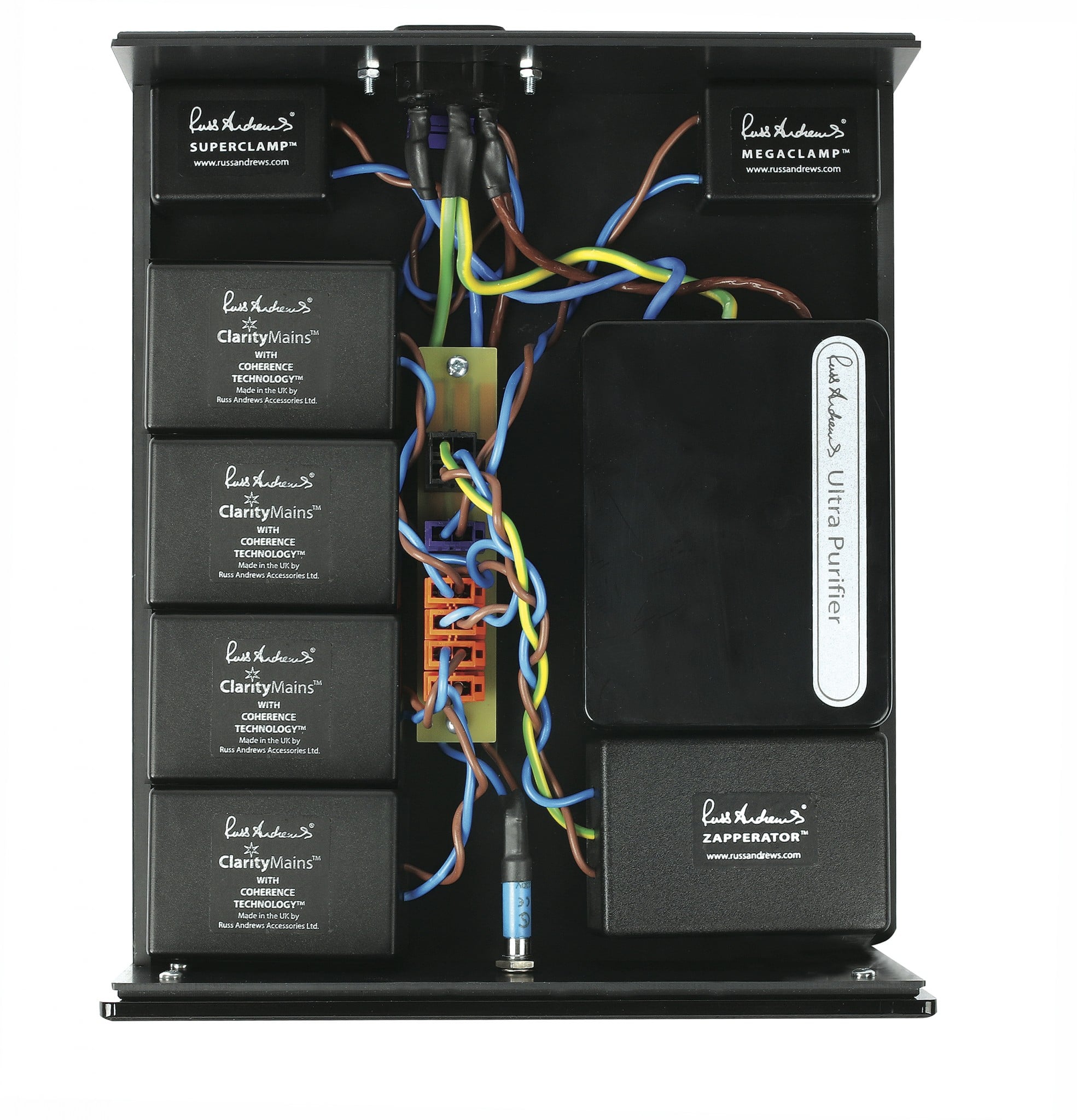
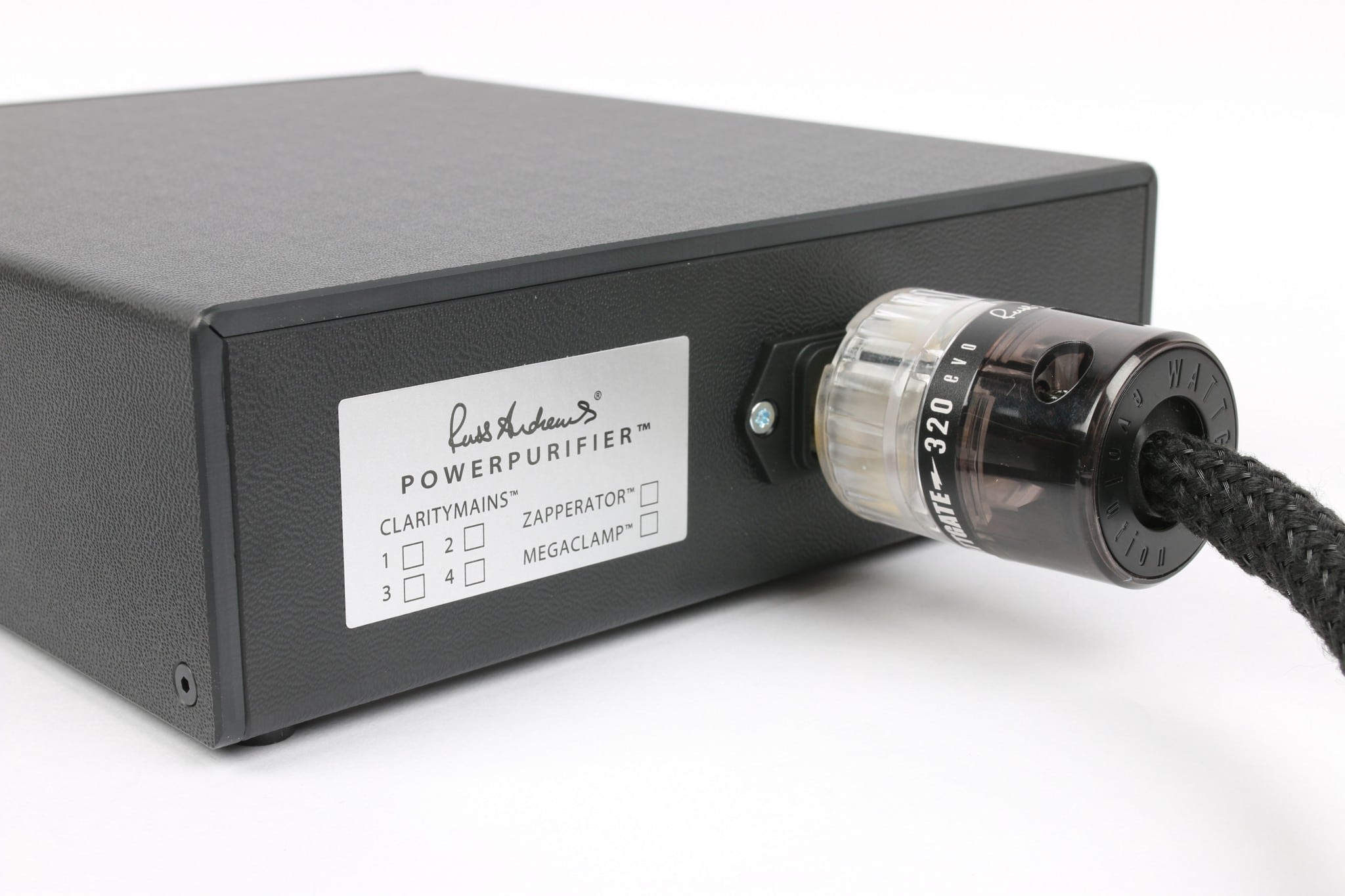
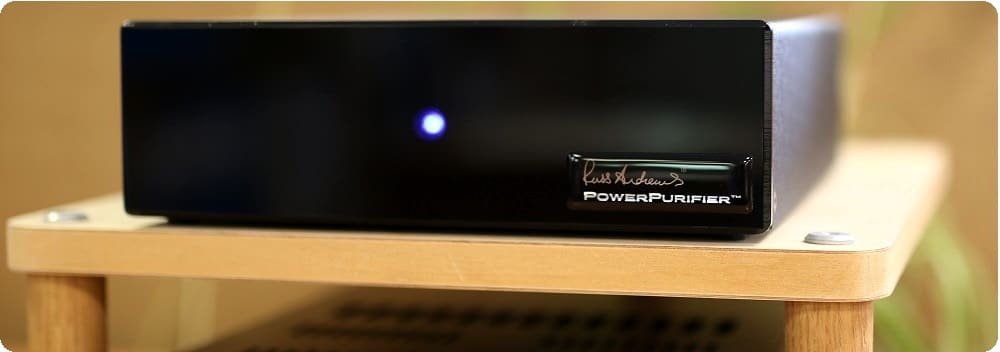


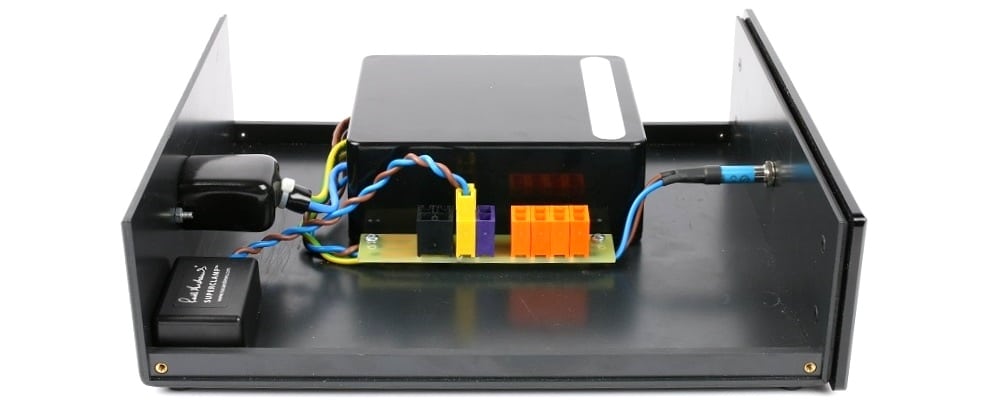


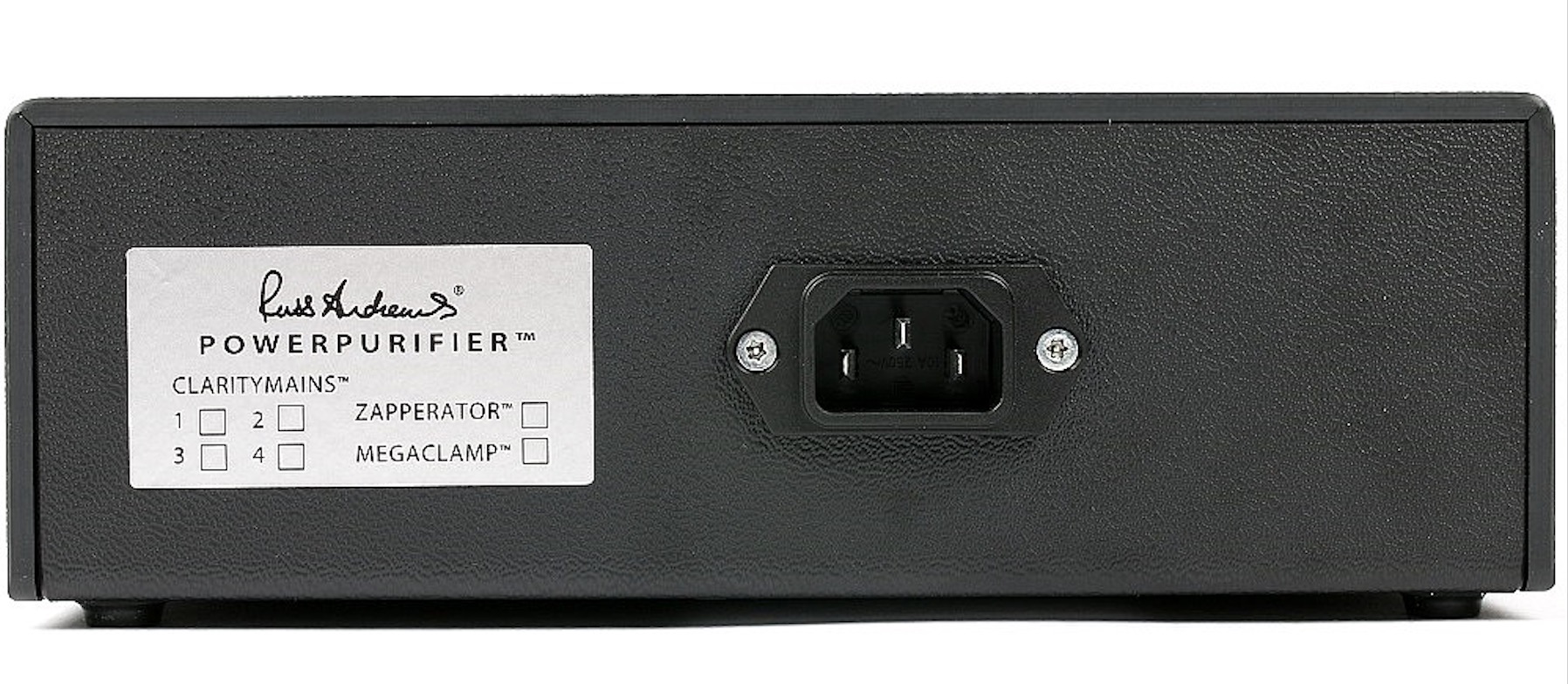



Hi Paul I found your review of the RA mains purifier intriguing, and not unlike the result from four (at present) SuperClamps. My question: do these so-called passive devices have a power consumption rating and if so, what is it? Perhaps they are truly passive.
Thanks
Graham
I’ll ask RA for you, Graham. Be back with an answer ASAP,
A reply from RA, for you, “The short answer is yes, the PowerPurifier consumes a small amount of power. Russ measured it at 5w.
Our range of mains conditioners work as a Power Factor correctors and so should be measured with the entire household load to give a meaningful result. The aim is to bring the household PF to 1 or very close to it. When Russ measured the PowerPurifier, it used around 5W. It varies depending on the voltage of your supply but that’s the level we measured here.
But a consumer energy meter will likely produce very different results! These are good at measuring resistive energy usage but all the ones we’ve tested are bad at measuring inductive or capacitive loads and their Power Factor measurements were inaccurate. Reliable and accurate professional meters cost about £5000. To attain meaningful and accurate measurements, you must use a professional inline meter and under normal circumstances.”